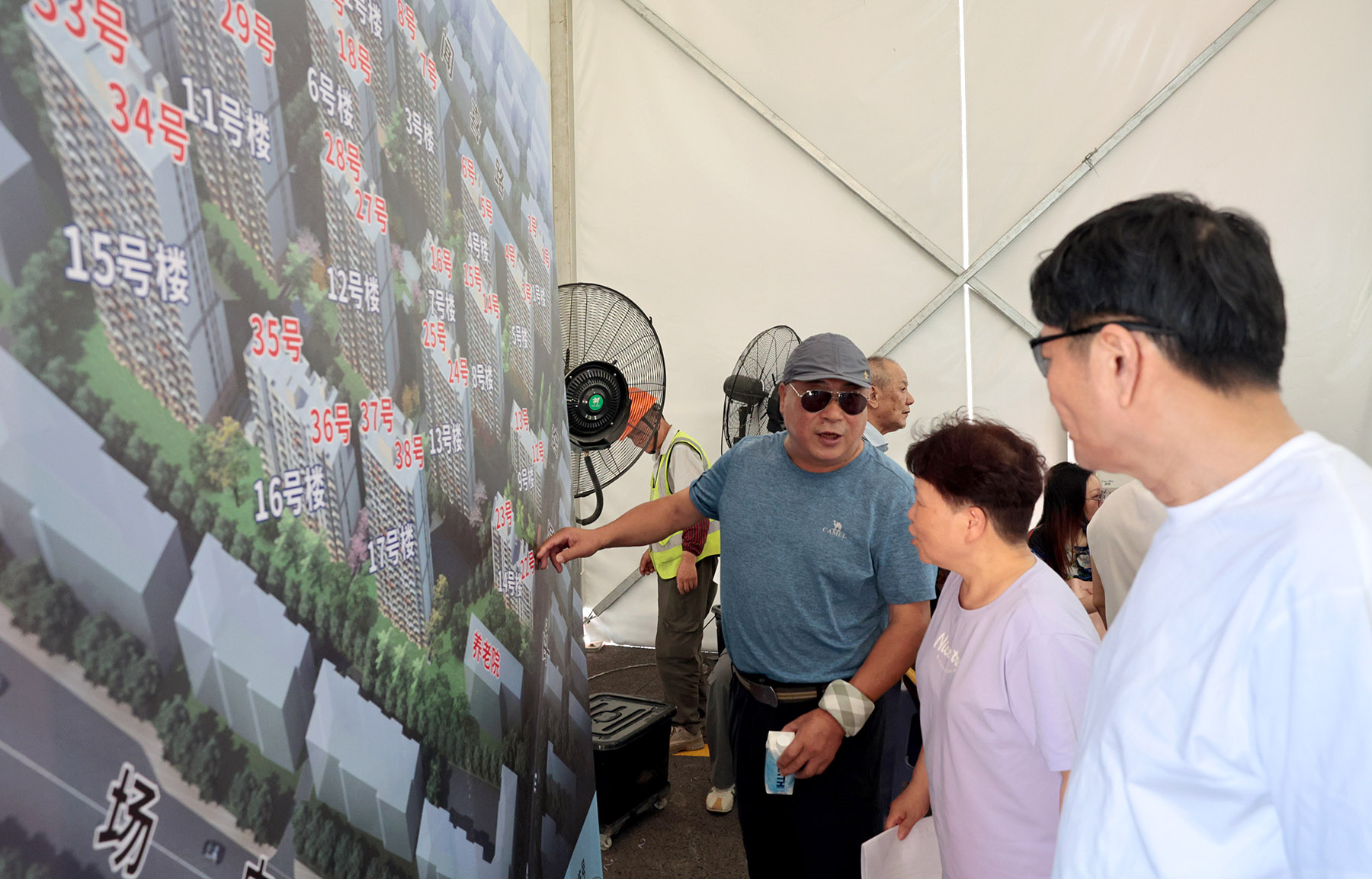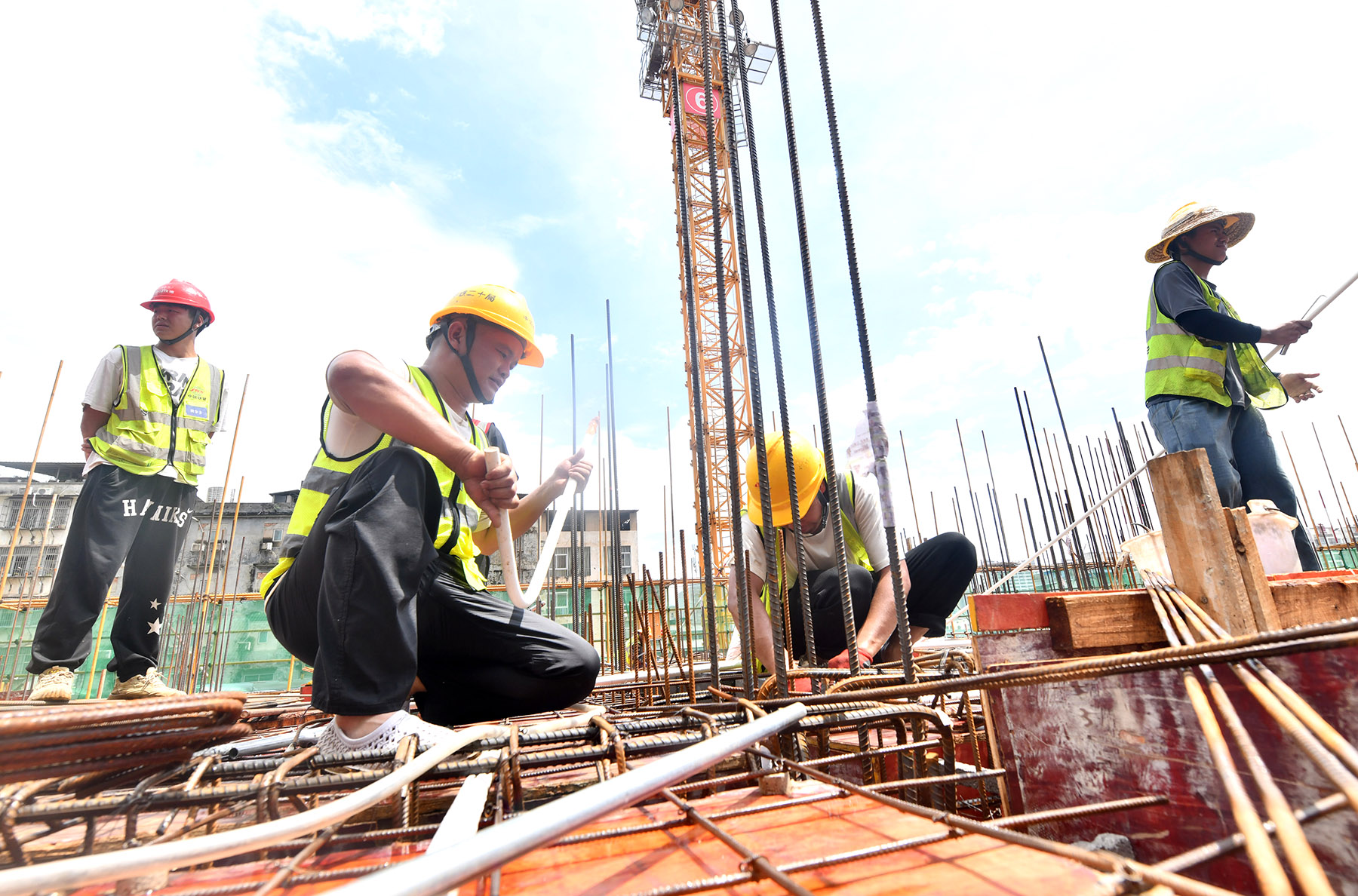China empowers residents to lead reconstruction of old urban homes

For Wang Huiying, a 67-year-old resident of a 1980s-era apartment building in Beijing, daily life is a litany of small struggles.
Climbing five flights of stairs requires two breaks to catch her breath. The rainy season brings leaks that demand three buckets strategically placed on her windowsill, and wall plaster has crumbled away entirely in some spots, exposing the bare brick beneath.
"It's exhausting," she said. Her complaints echo a common refrain among millions of residents across China's cities, where a vast stock of housing is rapidly showing its age.
These older neighborhoods, once the hallmark of urban modernization, now present a dual challenge: they are not only increasingly obsolete, with outdated amenities and poor insulation, but are also largely structurally unsound.
READ MORE: Urban renewal calls for diversified funding sources
Many have been classified as Grade C or D — the official ratings for buildings deemed unsafe for habitation — posing persistent safety risks to their occupants.
Data from the Ministry of Housing and Urban-Rural Development show that by the end of 2022, nearly 20 percent of all urban buildings in China were over 30 years old. This signifies that a growing portion of the national housing stock is entering the middle and later stages of its intended design life.
By 2040, an estimated 80 percent of urban buildings will have reached this phase, presenting a monumental task for policymakers focused on urban renewal.
This significant challenge was underscored at a recent Central Urban Work Conference, which outlined the nation's transition from a period of rapid urbanization to one of stable, quality-focused development.
The directive signals a fundamental change in priority: the focus is no longer solely on building the new, but increasingly on improving the old, experts said.
For over a decade, the dominant approach for urban renewal was clear-cut: demolish aging neighborhoods and erect new towers in their place, said Yang Baojun, president of the Urban Planning Society of China.
This approach, known as the shantytown redevelopment model, once drove a transformative wave of construction, relocating millions of residents into modern housing and clearing vast swathes of China's urban past.
The model thrived in an era of booming real estate. With property values on a steady climb, local governments could easily partner with developers. The profits from selling new, higher-density apartments not only covered the costs of demolition and rebuilding, but also generated significant revenue, making it a financially self-sustaining engine of urban change, Yang said.
That era, Yang noted, is largely over. As China's property market enters a period of recalibration and adjustment, the economic calculus that made large-scale demolition so viable has fundamentally shifted. The once-reliable profits have narrowed, complicating funding and discouraging developer participation, Yang added.
"Now China is empowering residents to lead the revitalization of the country's aging urban housing stock, moving away from government-driven redevelopment models that once defined the nation's rapid urbanization," Yang said.

The change, outlined in a recent central government directive on urban high-quality development, emphasizes "resident-led renewal and in-situ reconstruction" for old homes — a response to both economic constraints and evolving social demands.
Li Yujia, chief researcher at the residential policy research center of the Guangdong Planning Institute, said: "It's a bottom-up refresh of urban neighborhoods. Residents organize, fund and manage the process. The government's role evolves from direct player to facilitator and policy guarantor."
Through community self-governance, residents make collective decisions, raise funds independently and openly select developers to demolish and rebuild existing structures — all while guaranteeing their right to return, Li said.
Last year, Zhejiang became the first province in China to issue trial guidelines supporting resident-led urban renewal, a policy now formalized in the newly implemented regulations. The rules establish a clear legal pathway: building owners may propose renewal project applications.
Zhegong New Village, a community of 548 households, has become a shining example in Hangzhou, Zhejiang. Fourteen buildings were cramped and obsolete, with four classified as C-level dangerous structures. Public space was scarce, amenities were lacking and residents desperately wanted change.
After extensive consultation, the households agreed to self-fund 470 million yuan ($66 million) — averaging nearly 1 million yuan per family including parking space purchases — covering over 80 percent of the total 530 million yuan project cost. The remainder came from government renovation funds.
A total of 13 dilapidated buildings were replaced with seven modern 11-story towers featuring expanded green spaces, underground parking and community facilities. The project added 9,800 square meters of new construction while improving living conditions.
As China advances its ambitious urban renewal initiatives, planners and policymakers are confronting a complex reality: the success of resident-led reconstruction projects often hinges not just on funding and policy, but on the often-overlooked human element of community leadership.
"The difficulty cannot be overstated," said Wang Binwu, an associate researcher of the policy research center at the Ministry of Housing and Urban-Rural Development.
"Achieving consensus among hundreds or even thousands of homeowners, securing adequate funding and managing temporary relocation during reconstruction have tested even the most successful pilot projects," Wang said.
"The diversity of resident demands creates enormous complexity," Wang said. "Young families want larger units, elderly residents prioritize elevators and accessibility, while lower-income households fear the financial burden."
Yan Yuejin, deputy head of the Shanghai-based E-House China R&D Institute, cautioned that funding presents another major obstacle. While some households can readily contribute significant sums, others struggle, creating equity concerns.
Moreover, attracting private investment remains difficult without clear models for risk-sharing and returns. Ensuring transparent and standardized use of collective funds adds another layer of complexity requiring robust institutional oversight, Yan said.
ALSO READ: Local govts nudge homebuyers with incentives
"Perhaps the most immediate challenge is transitional allocation. The period of demolition and reconstruction forces residents to find — and fund — temporary housing, often incurring additional rental and commuting costs that strain household budgets, particularly for fixed-income seniors," Yan said.
Chen Jie, a researcher of China Institute for Urban Governance with Shanghai Jiao Tong University, said that the prevailing approach to community-led renewal — which often struggles to achieve 100 percent homeowner agreement — has fundamental limitations.
Chen proposes formalizing an exit mechanism that would allow unwilling residents to depart while enabling committed residents to stay and rebuild.
It's viable to allow investment institutions to acquire properties from willing sellers at market rates in predominantly small-unit communities. Once sufficient shares are assembled, these institutions would negotiate with remaining residents to demolish and rebuild, then sell the new apartments back to staying owners at discounted market prices, Chen said.
"Housing improvement isn't limited to in-situ renewal alone," he emphasized. "We shouldn't forcibly bundle those who want to leave with those who want to stay."
Contact the writer at wangkeju@chinadaily.com.cn


